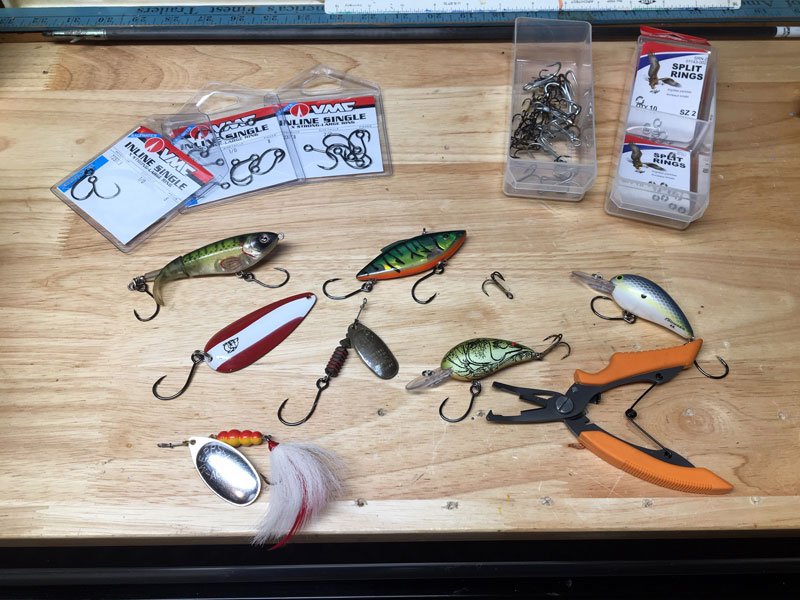Since it’s the height of summer and thus a time of high mortality among released fish, especially stripers (see Striped Bass Population: The Controversy Continues for more details), this month we set aside some time to spread the word about some tactics you can use to reduce the mortality rate among fish you catch and release.
Single Hooks
I cast the lure parallel to an old log jutting into the water, let it rest, count to two and then start the retrieve. I feel the familiar tap on the line and set the hook – the line is tight and the fight is on, but will the fish stay hooked?
Unlike most lures that you find on the shelves of your local tackle shop the ones that I have in my tackle box have been modified, hence my uncertainty. I’ve replaced the treble hooks on my lures with single inline hooks.

I started modifying my baits recently, after a catch-photo-release pickerel tournament that I entered. The tournament rules didn’t allow the use of treble hooks because pickerel, like their cousins the pike and musky, tend to inhale their prey. Many times the lure’s treble hooks will pierce not only the mouth of the fish but also get tangled in the fish’s gills, sometimes killing it. The net result? After I made the change, I haven’t lost any fish during a strike or fight due to the use of single inline hooks.
It’s relatively easy to modify your lures. All you need is a pair of split ring pliers, some inline hooks, and some split rings for inline spinners and spoons. I normally go one hook size larger than the treble hook that I’m replacing. If the hook is dressed with bucktail, as on some inline spinners or plugs, I simply clip off two of the hooks leaving the third. That way I haven’t changed the lure’s presentation by removing the bucktail dressing.
Here's a video showing the process, step by step:
-By Eric Packard
Handle With Care
How you handle the fish you catch has a big impact on how healthy those fish are when you release them. Here are three important “dos” and “don’ts” to keep in mind when you’re handling a fish:

DO wet your hands or fish rag before handling a fish, to avoid rubbing off its protective coat of slime.
DO use a lip-gripping device to control the fish.
DO support the fish with an open hand under the belly when holding it horizontally for a quick picture (which you’re about to send along with a brief report to [email protected], of course), to avoid stressing the jaw hinge.
DON’T let a fish flop around on the ground or the deck of a boat until it tires.
DON’T put a finger or hand under the gill plate to hold the fish (its gills are its lungs and you need to leave them untouched).
DON’T keep it out of the water any longer than necessary, and when you do put it back into the water if the fish doesn’t swim off, hold it by the tail and move it back and forth to pump water through its gills until it kicks its tail and tries to swim off.
-By Holly Innes
For more information on safe handling techniques, see Dos and Don'ts of Catch and Release Fishing.